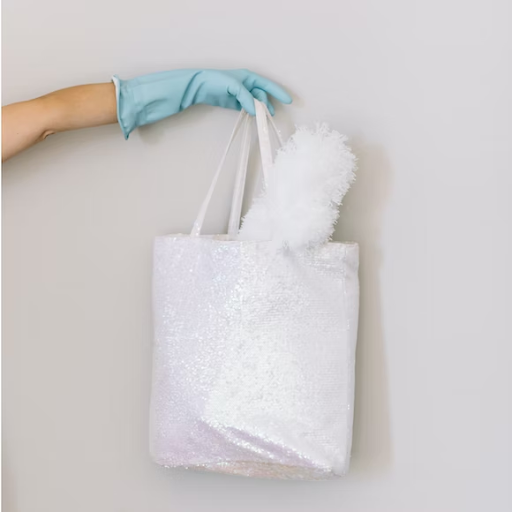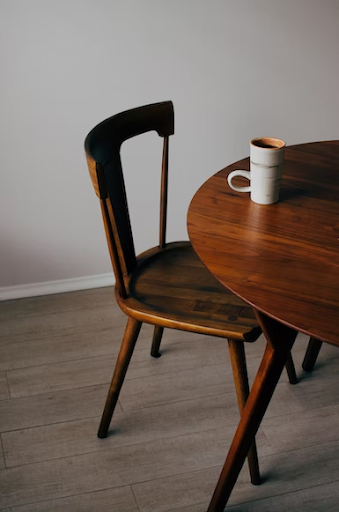Everyone is aware of the difficulty of dusting. For example, cleaning up the dust when you see it has accumulated in your home just to have it return shortly after. It can be tempting to throw your hands in the air and dismiss the dust, but we can guarantee this is not the best course of action. A reputable company such as Muffetta’s Housekeeping, House Cleaning and Household Staffing Agency can help you to achieve a dust free home.
A variety of substances, including skin cells, animal and human hair, dirt, pollen, and other obtrusive substances, combine to form dust. Nobody wants this cluttering up their house. So the million-dollar issue is: Which dusting technique effectively banishes dust for good? Even so, is that possible?

Good cleaning services can help with weekly dusting, but there are steps you can take to ensure it is done consistently and on time.
Why is dusting so crucial?
Different substances make up dust particles. It most likely contains a mixture of pet dander, hair, and dead skin cells from people (if you have pets). However, dust can also include much more harmful elements, like mosquitoes.
More intrusive elements combine as the dust accumulates. As a result, large clumps of dust lurking behind or beneath your furniture are dust bunnies.
Dusting is crucial since it lowers your risk of getting sick and developing allergies. Even though the majority of dust types don’t cause serious illnesses, they might nevertheless cause moderate allergies and infections. This comprises:
- Coughing
- Eye discomfort
- Sneezing
Dust can aggravate asthma and trigger hay fever in extreme circumstances. Dust is an eyesore as well. A thick layer of dust can make even the most exquisite piece of furniture look unattractive and untidy. A professional housekeeping service will help you if you are hesitant to do it yourself.
How to do dusting properly?

For many of us, dusting furniture entails using aerosol cans, oil bottles, and one or two cheery feather dusters. However, according to furniture experts, you only need two rags and some water.
Eli Rios, owner of Long Island City, New York’s ECR Antique Conservation & Restoration Inc., asserts that “the correct technique is the contrary of what others think.” “Dust can be removed using a moist cloth.”
How frequently should I dust? The pros advise doing it whenever you feel like it or when the furniture appears to need it. Rios recommends using a soft fabric, cheesecloth, or even an old T-shirt.
Here are the steps to do proper furniture dusting
First, remove all items and, one by one, dust each item of furniture. Start by clearing the furniture of everything. Shortcuts and dusting around your objects won’t help to get rid of all the dust. Additionally, picking up each item and dusting underneath it takes longer than simply taking everything off the piece of furniture and dusting it all at once.
Secondly, dampen one cloth. A furniture and cabinet manufacturer in Chicago named Fine Woodworks’ Scott Chambers advises, “You want a little damp towel, not one you can wring water out of.” There shouldn’t be any water pools or droplets left behind after use. That is why the word “damp” implies “damp,” not “wet.”
According to Philip C. Lowe, director and master craftsman at The Furniture Institute of Massachusetts, you can even use a little dish soap in the cleaning process. This college teaches furniture making and repair in Beverly, Massachusetts. Just use a moist cloth to wipe it off.
Thirdly, make delicate movements. Lowe enjoys pacing himself over the floor. No need to scrape, he says, adding that you should exercise caution near exposed raised veneer, loose molding, and other fragile areas.
Lastly, buff the surface with a dry cloth to complete it. According to Rios, the furniture’s gloss will be restored. Don’t use the feather duster. According to Lowe, the issue with those is that they merely make the dust airborne once more, where it then settles back on the furniture.
Our experts advise avoiding furniture oils and aerosol sprays since they contain ingredients that temporarily make things shine but can also develop buildup on the furniture that hides the wood grain and makes refinishing challenging.
According to Rios, if a piece of furniture’s present finish is broken or worn away, oils may seep into the exposed wood and eventually discolor it.
But think of paste wax. If the polish begins to fade, the experts advise using a paste wax once or twice a year. According to Chambers, the wax fills in any scuffs or holes in the wood’s finish. The resulting smoother surface reflects more light and gives the object more sparkle.
However, he cautions using wax sparingly while adhering to the instructions and making sure to clean any paste from any nooks or carvings in the furniture.
Chambers claims that the major issue is “too much wax.” “You’ll be rubbing there forever, trying to get the wax off.”
Mistakes you make while dusting
First, wiping a surface with a dry rag merely spreads dust, which is just dirt and revolting dead skin cells. This is because the dust ends up on the floor or in the air and eventually returns to the surface you are trying to clean. Therefore, your work is actually unproductive. Essentially, dust is very loose, with small particles that will easily fly around when exposed to even slight wind. The rag does not remove the dust but merely moves it.
Second, a dry rag might really cause serious long-term damage to your furniture. The editor of the home investment website Sensible Digs, Lisa Torelli-Sauer, compares using a dry cloth to dusting to using sandpaper to wash your face. She warns that dry dusting will destroy the finish of your furniture by scratching the surface. So if you’re wiping up a spill or buffing a completed surface after using a water-based cleaning product, you should generally only use a dry towel on a wet surface.
To get a superior dusting and prevent any harm to the furniture you’re trying to keep, use a damp rag instead of a dry one and spritz it with dusting polish. You can also make your own at home by combining castile soap, olive oil, and water (to act as an emulsifier). You might also simply take an electrostatic duster, which draws dust and grime particles with static electricity.
Additional tips for dusting
Deep clean versus regular dusting
Ideally, you should frequently dust your house- if not every week, at least every other week. The dusting you perform during spring cleaning is different from the dusting you do on a regular basis.
The less obvious things are the ones you deep clean. This covers areas such as window sills, door frames, chair backs, bed frames, wall voids, and fan blades. The more visible portions of the house and those that collect dust fast should be cleaned frequently, like your living room, bedroom, bathroom, dining room, and kitchen furniture.
Additionally, keep an eye out for areas where family and visitors frequently congregate. For instance, look for the dust around bed heads and on tables.
Eliminating Dust
While human skin and hair are the main sources of dust, you can avoid intrusive foreign particles like pollen. First, lock all of your vents, windows, and doors. Next, install a doormat with bristles to catch extra dirt tracked in by shoes. Finally, never wear shoes inside your house; always leave them by the door or outside before entering.
An air filter will assist in catching extra dust particles for the dust you produce. If you have pets, ensure they are well-groomed and take precautions to prevent shedding. The least amount of clutter is also ideal. Almost anything is capable of adhering to dust. You might not consider dusting the stray items in your home. It is, therefore, advisable to simply get rid of them.
Wear a mask
There are many who are allergic to dust and can fall severely sick while dusting. If you are one such person, it is best to take some precautions before you start to dust the furniture. Wearing a mask will protect you from inhaling dust.
Endnote:
While not attractive, dusting is a vital task. Unfortunately, dust accumulates all over your house and maybe both dangerous and ugly. Therefore, it’s crucial to take precautions against dust and know how to dust your home properly. We hope this article helps you figure out the basic guidelines for dusting furniture.
Interesting Related Article: “The Important Benefits of Regular Carpet Cleaning“

